Commercial Ganseys in Norfolk
Hand-knitted and machine-knitted
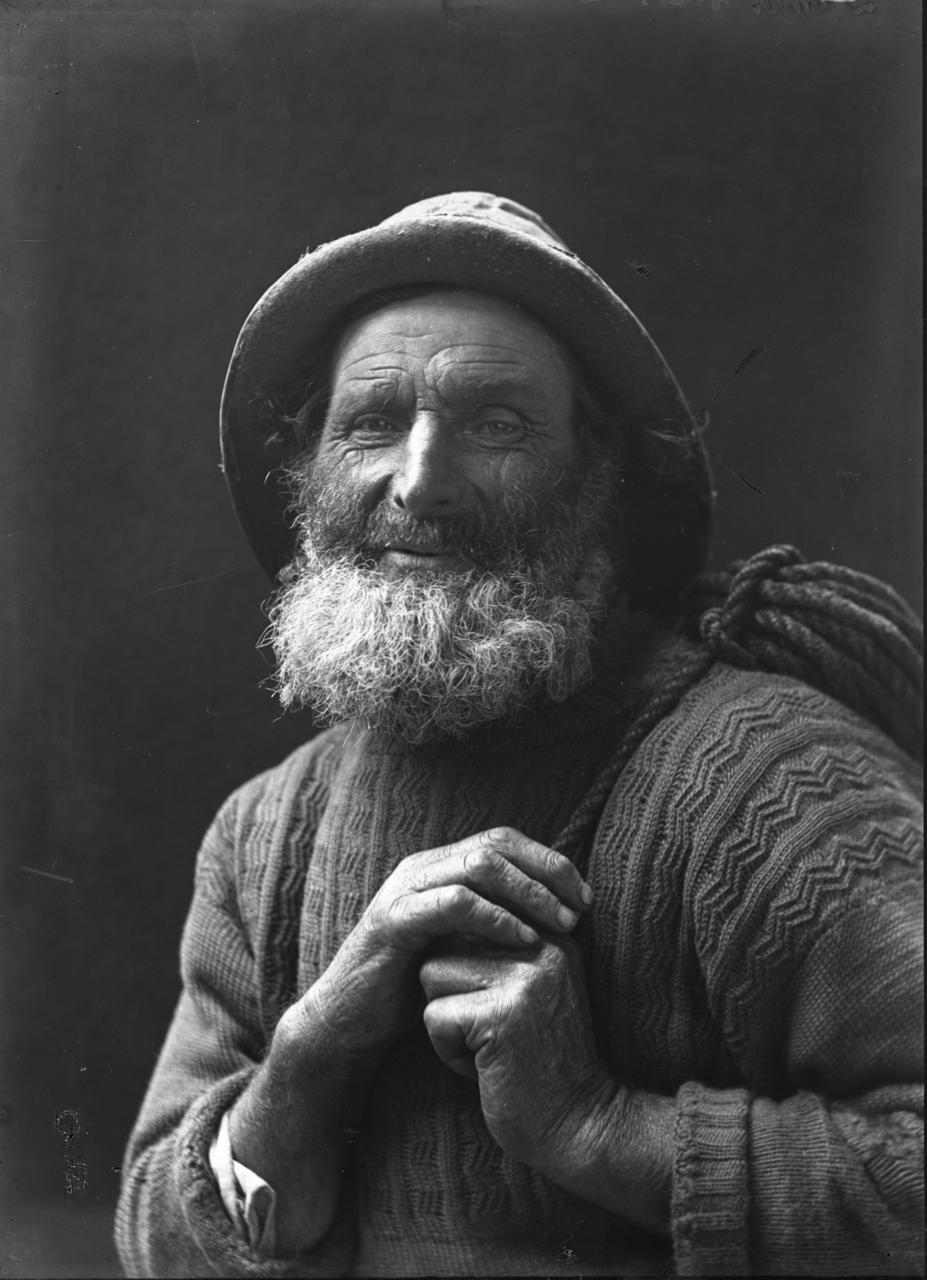
Portrait of Sheringham fisherman 'Buck' Craske by Olive Edis
The principal interest of this website is the traditional patterns of ganseys knitted in the fishing communities of Norfolk. However, with the expanding population in the 19th century the British fishing fleet grew rapidly and so did the demand for warm woollen clothing. There was a commercial opportunity and many fishermen obtained their workwear from marine outfitters such as The Great Grimsby Coal Salt and Tanning Company (known latterly as Cosalt and they used the 'Victory' brand name). As many of these garments appear in photographs and in museum collections I think it worth showing some here as a comparison to the home-made ones in the other sections.
Cosalt had a main outlet in Lowestoft but ceased trading in 2015 after 143 years. For many years they had a small Cosalt depot in a corrugated iron shed in Beeston Road, Sheringham, run in the early 20th century by Robert 'Dowsey' Little and later by Teddy 'Fiddy' West. Nowadays it is a cycle shop.
Ganseys were commercially hand-knitted too in the 19th century, in places like Polperro, Cornwall where dozens or hundreds of knitters, mainly women, worked in their own homes on an out-knitting basis. In the early 20th century in Norfolk, John Green's and Johnson and Sons, both outfitters of Great Yarmouth sent carts out about once a month with wool for distribution to the outworkers along the coast (Winterton, Caister-on-Sea etc.) and collected the finished garments. Wool was weighed before it was issued and the garments were weighed when collected. Undoubtedly there was a small discrepency which was a bonus to the knitters who could use the yarn for their own purposes or sell it for the price of a pint of beer. According to Casey Goffin in an oral history recording (Cromer MUseum CRRMU : TR18),the outfitters would pay the knitters 6 shillings per garment (just after World War I) and the finished ganseys were sold at the outfitters in Yarmouth for 30 shillings.
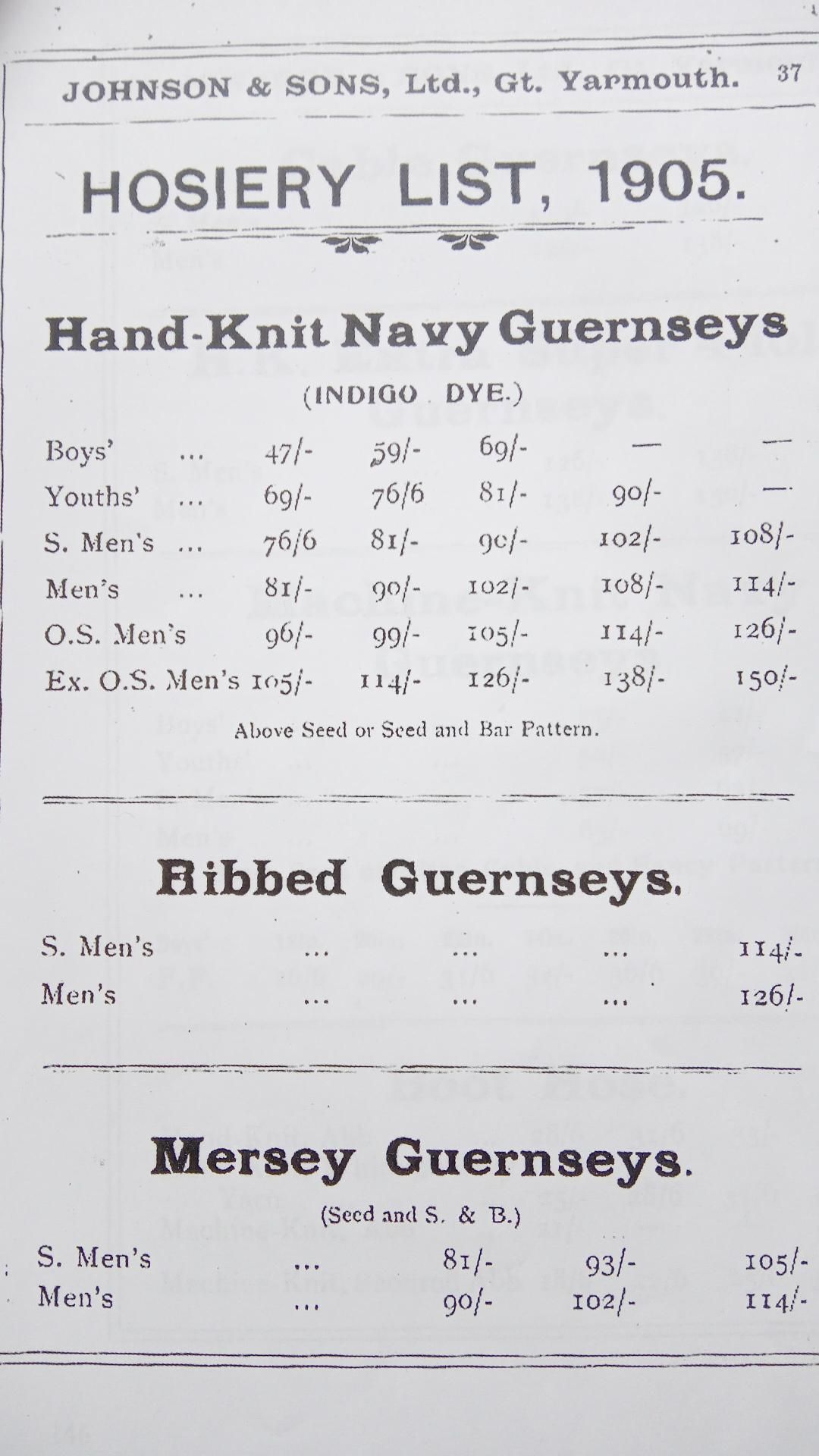
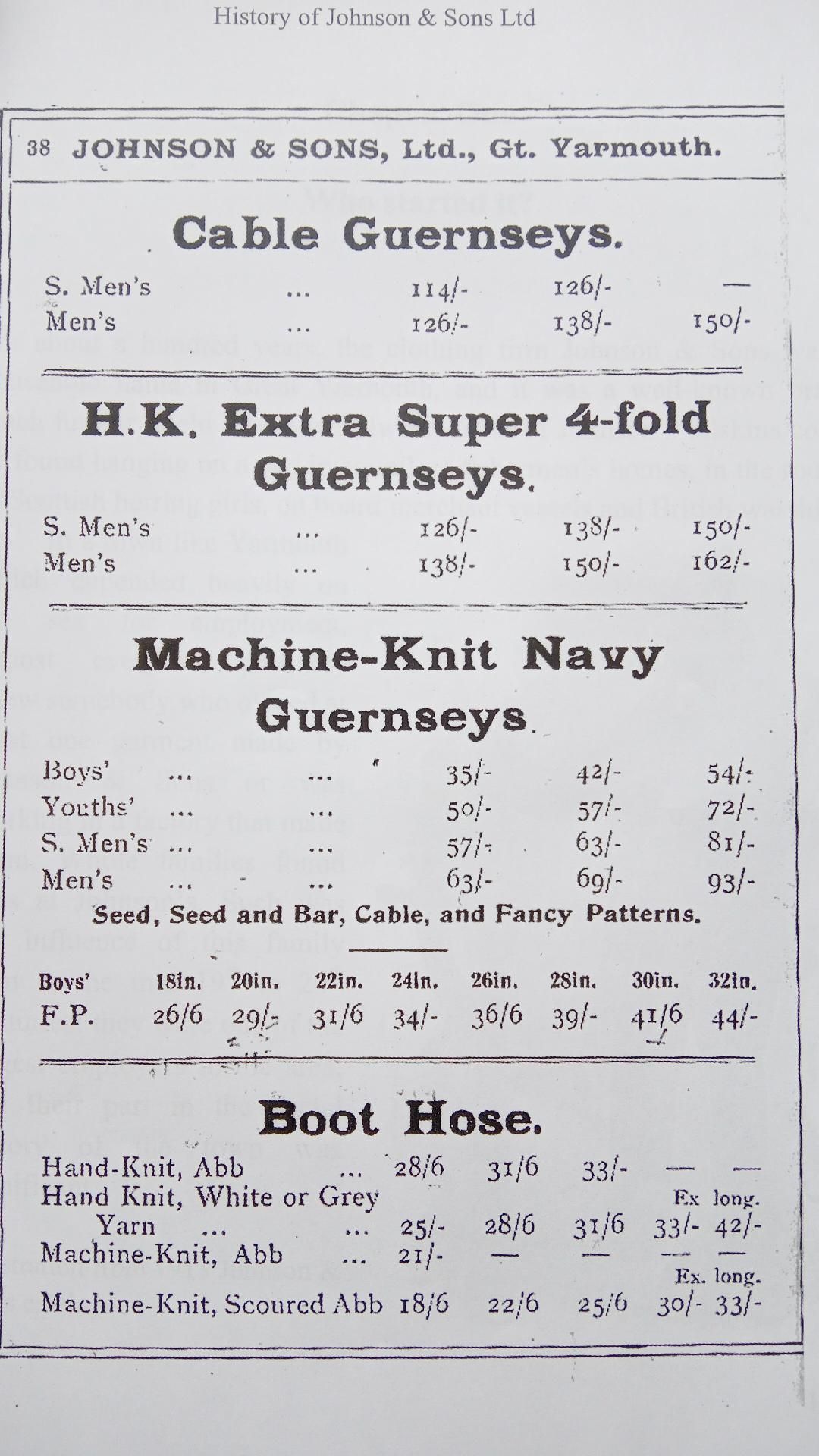
Click on a record number to see full record (use Back button to return to this page). Click on an image to see a large image in your default image viewer. Click on pattern thumbnail to download a pdf of the pattern (requires Acrobat Reader).
Seeds and Bars
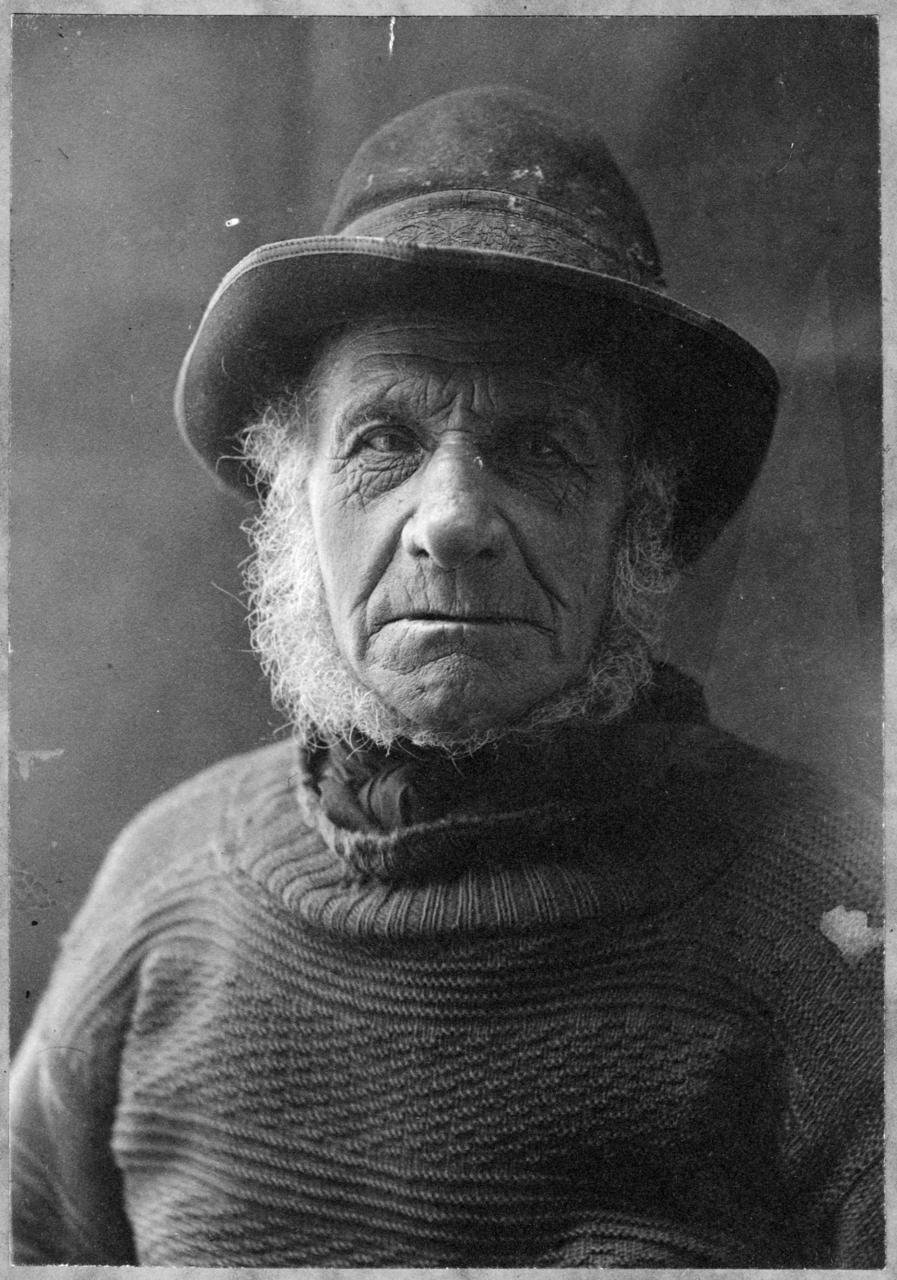 The earliest dated photographic evidence of a gansey in Norfolk (or perhaps anywhere in the world) is a photograph in the albums of the Upcher family of Sheringham Hall annotated 1858 (below). John Grimes is wearing a splendid top hat and a heavy seeds and bars gansey. This pattern became a universal dress of fishermen, found in ports around the British coast. Some of these were hand-knitted in the community (e.g. Mrs Verril's celebrated pattern from Staithes, North Yorkshire, reproduced in Gladys Thompson's Patterns for Guernseys, Jerseys and Arans) but huge numbers were exported from Polperro in Cornwall. Patterns for this style of gansey have been reproduced in books and enthusiastically knitted by home knitters and commercial factories alike.
The earliest dated photographic evidence of a gansey in Norfolk (or perhaps anywhere in the world) is a photograph in the albums of the Upcher family of Sheringham Hall annotated 1858 (below). John Grimes is wearing a splendid top hat and a heavy seeds and bars gansey. This pattern became a universal dress of fishermen, found in ports around the British coast. Some of these were hand-knitted in the community (e.g. Mrs Verril's celebrated pattern from Staithes, North Yorkshire, reproduced in Gladys Thompson's Patterns for Guernseys, Jerseys and Arans) but huge numbers were exported from Polperro in Cornwall. Patterns for this style of gansey have been reproduced in books and enthusiastically knitted by home knitters and commercial factories alike.
| GP75 | John Grimes' seeds and bars gansey | Sheringham 1858 |
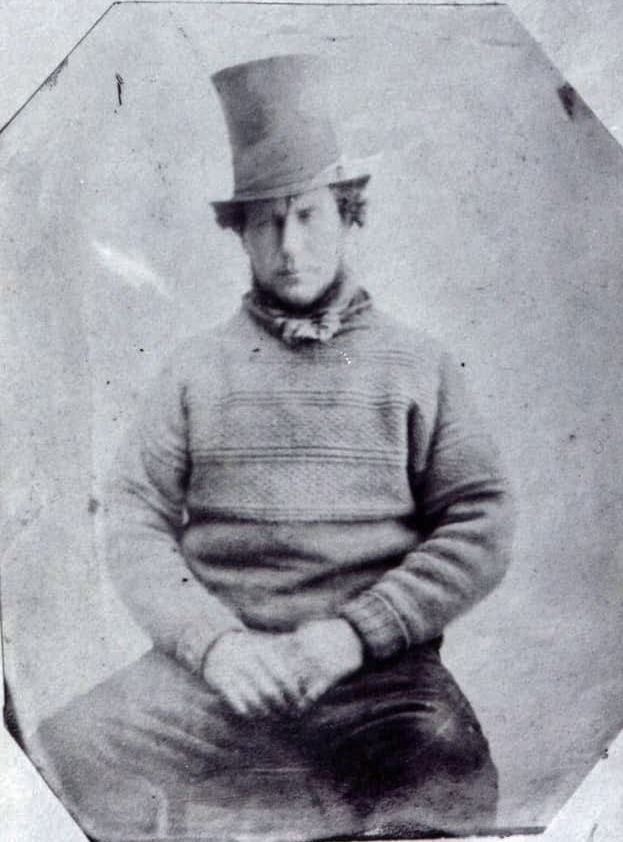 |
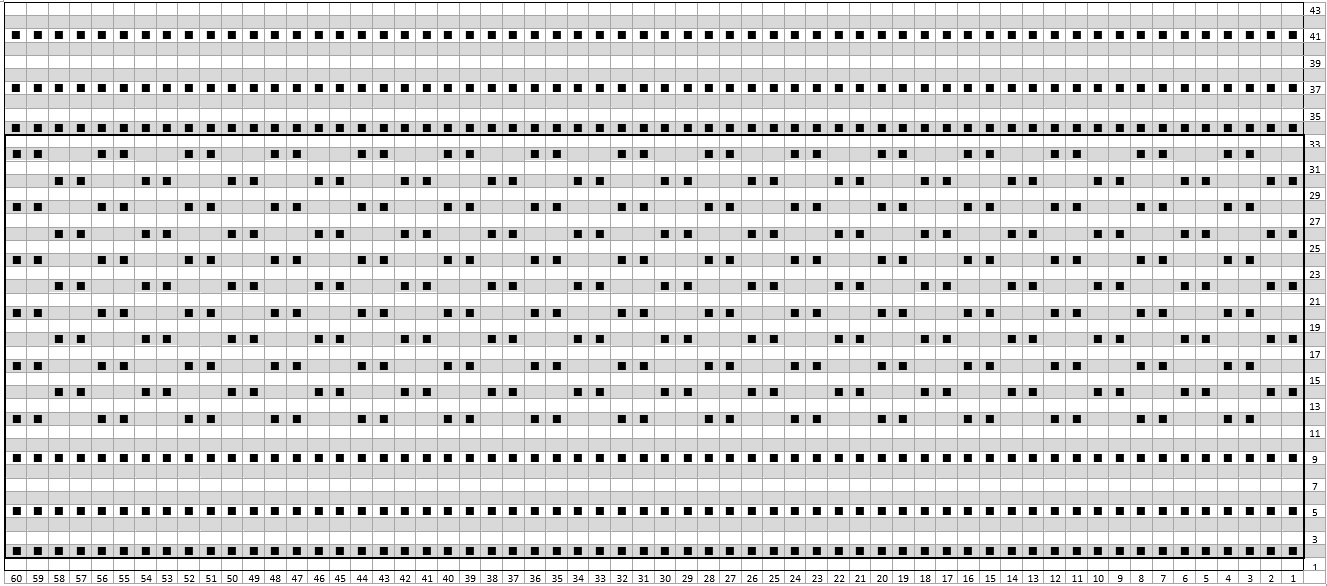 |
| GP8 | Latterday Cox's seeds and bars gansey | Sheringham undated |
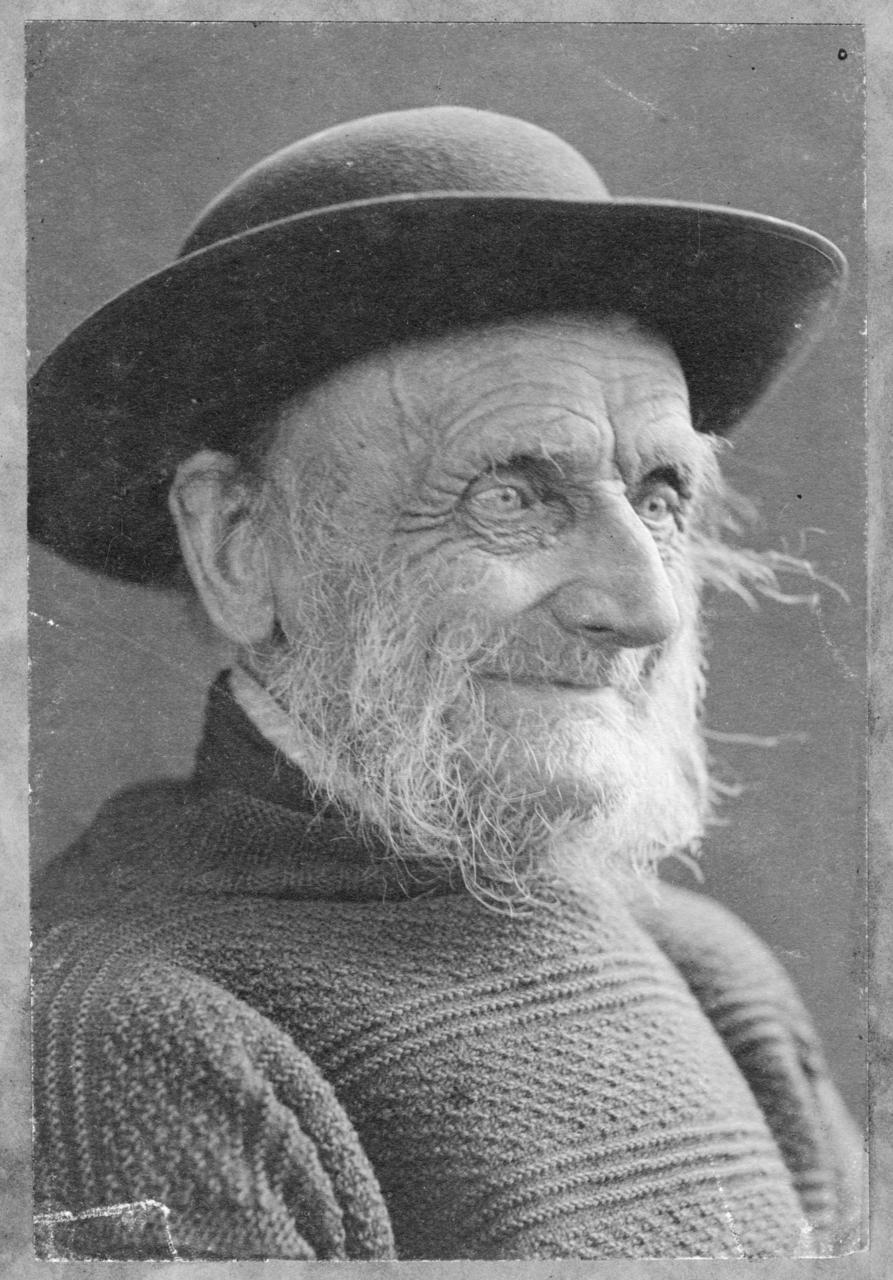 Norfolk Museums Service (Cromer Museum) |
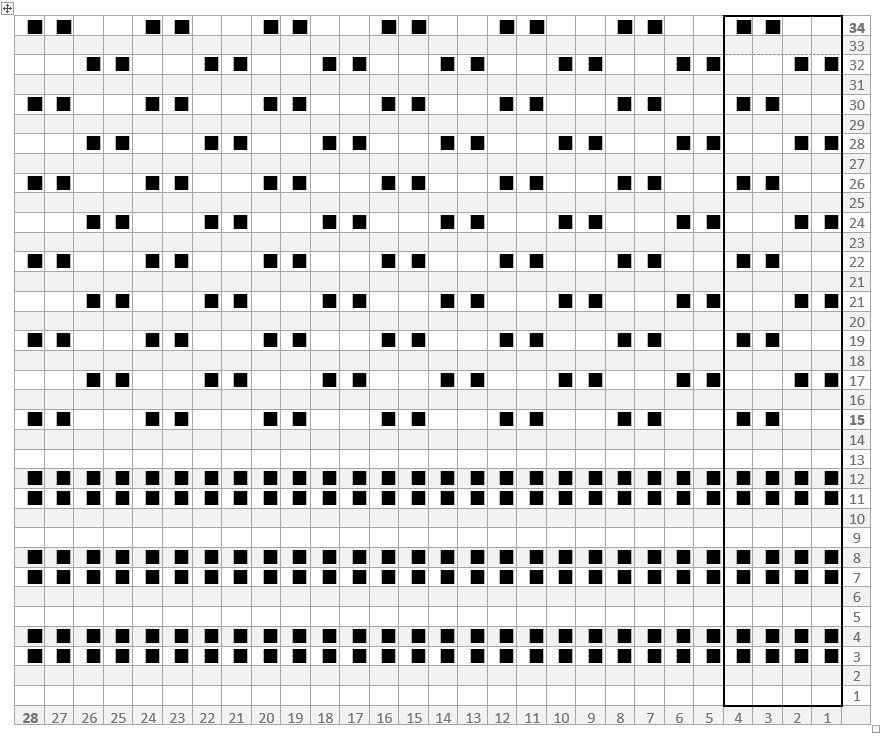 |
| GP31 | Gilbert Rook's seeds and bars gansey | Cromer About 1902 |
 Norfolk Museums Service (Cromer Museum) |
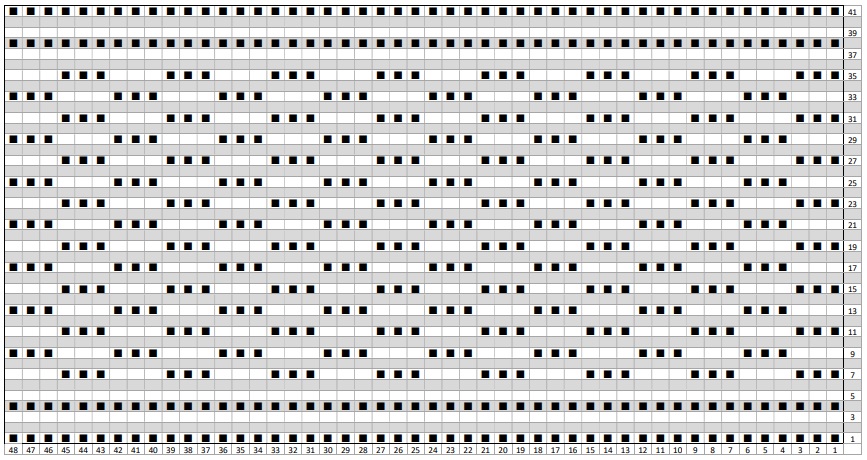 |
| GP4 | Tom Kirby's seeds and bars gansey | Cromer undated |
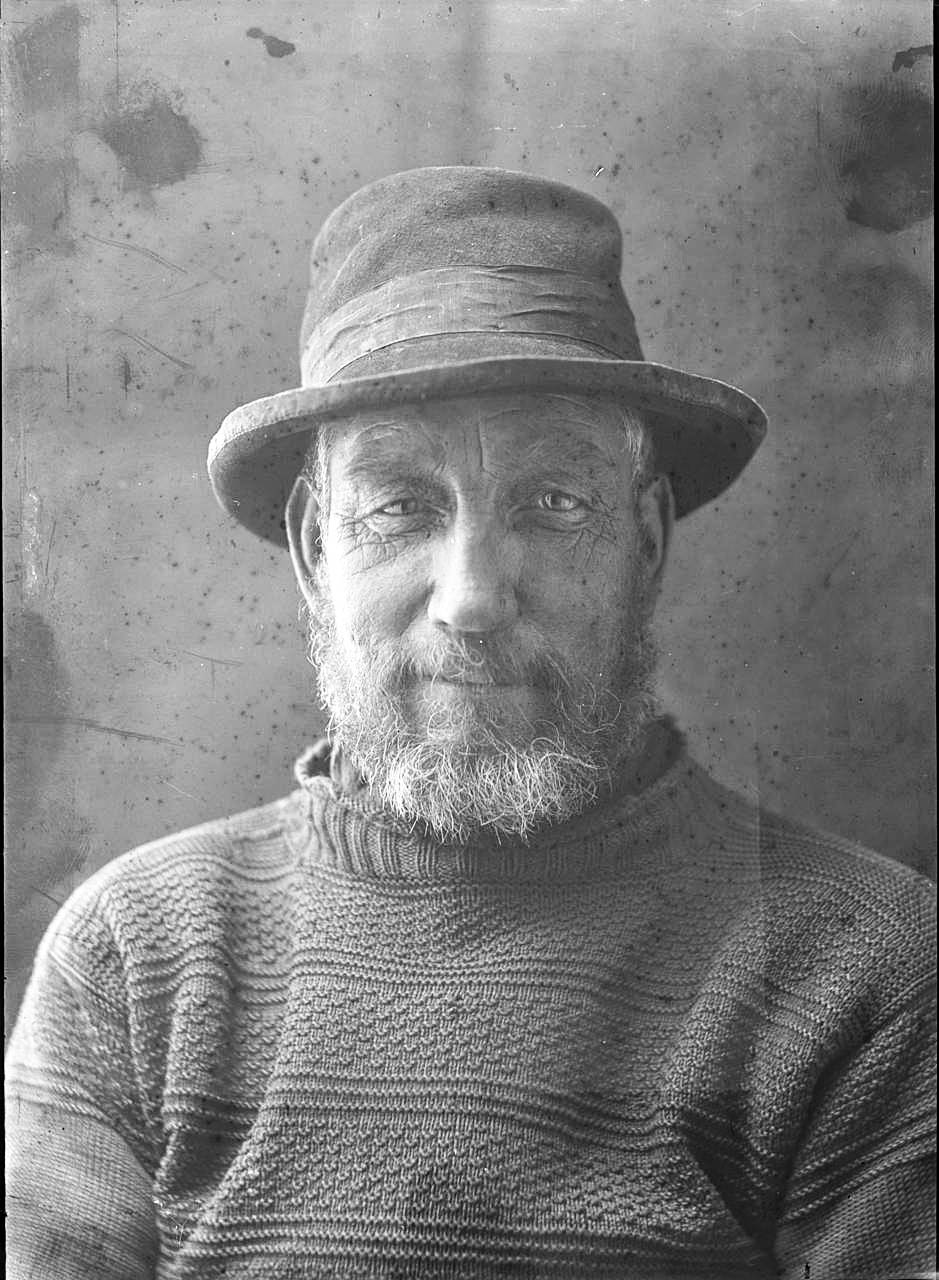 Norfolk Museums Service (Cromer Museum) |
 |
Seeds and bars with cables
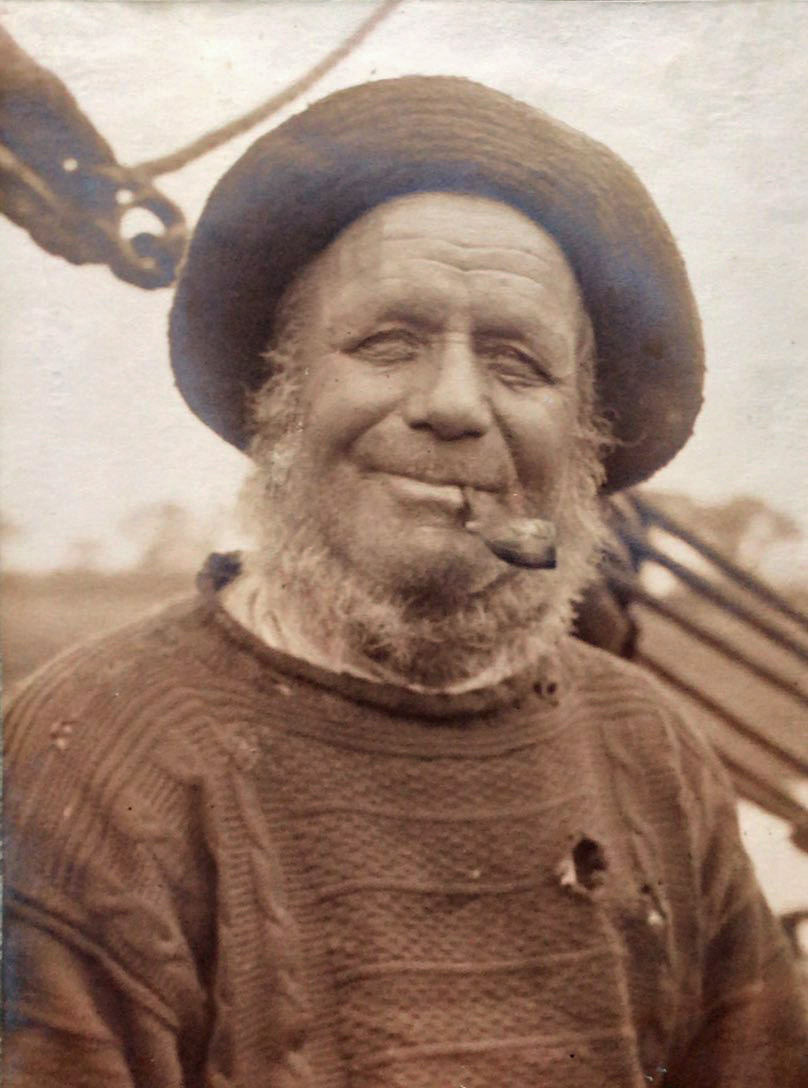 I believed that this was a North End pattern from King's Lynn until I saw an almost identical one on one of the wherryman who plied the Norfolk and Suffolk Broads. There is a long sea voyage between King's Lynn and the Bure and the Waveney and wherries were not designed to go to sea (but I believe some of them have been known to risk it). So unless the wherryman was a North Ender I feel it more likely that this design was a commercial hand-knit. It is afterall a mix of the universal motifs of seeds and bars and cables and coarsely knit. Further examples would clinch it but I feel it worth sticking my neck out. Are any North End historians prepared to refute my claim?
I believed that this was a North End pattern from King's Lynn until I saw an almost identical one on one of the wherryman who plied the Norfolk and Suffolk Broads. There is a long sea voyage between King's Lynn and the Bure and the Waveney and wherries were not designed to go to sea (but I believe some of them have been known to risk it). So unless the wherryman was a North Ender I feel it more likely that this design was a commercial hand-knit. It is afterall a mix of the universal motifs of seeds and bars and cables and coarsely knit. Further examples would clinch it but I feel it worth sticking my neck out. Are any North End historians prepared to refute my claim?
| GP71 | James 'Duggie' Carter's seeds and bars with cables gansey | King's Lynn pre 1905 |
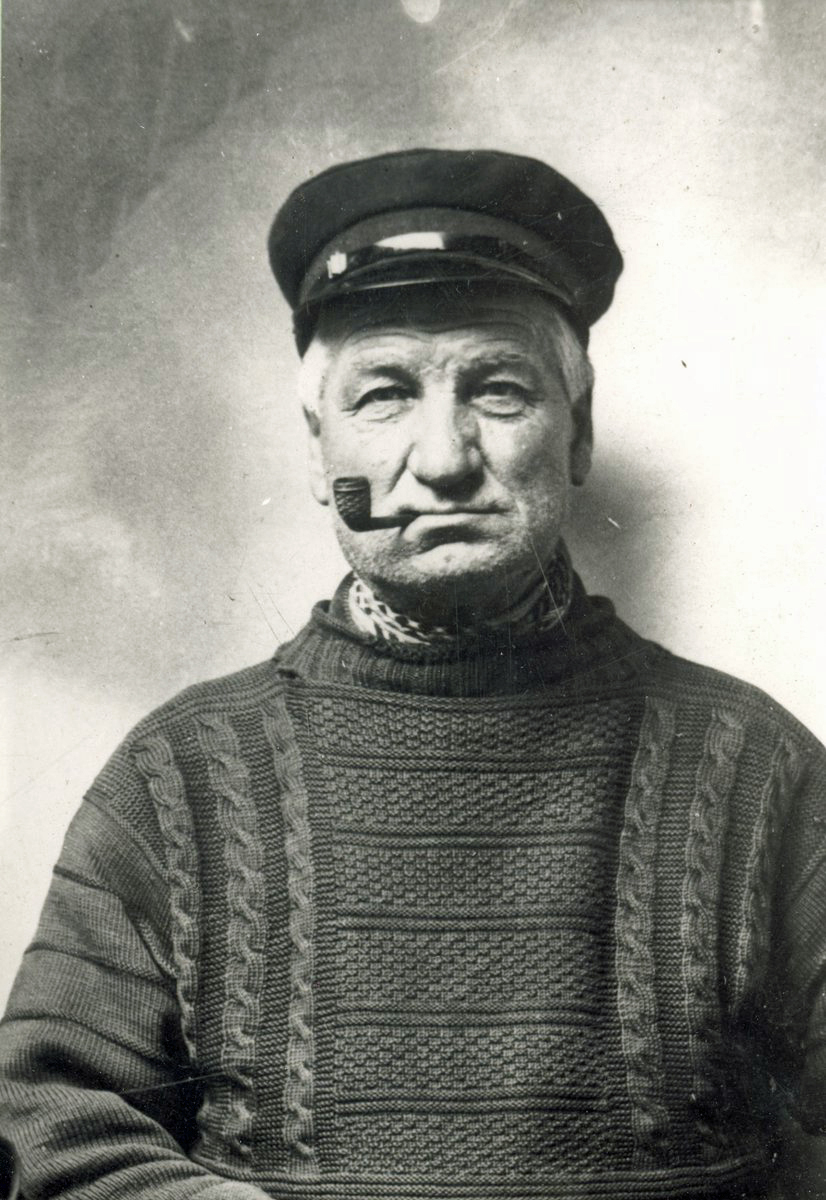 |
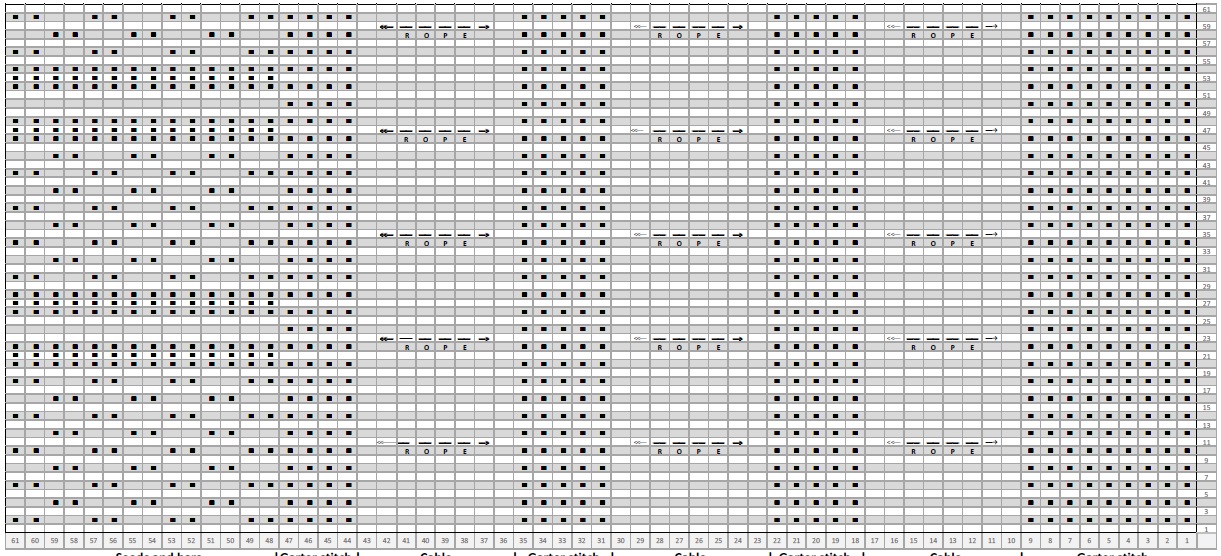 |
| GP96 | A wherryman's seeds and bars with cables gansey | Norfolk & Suffolk Broads about 1900 - 1920 (?) |
 |
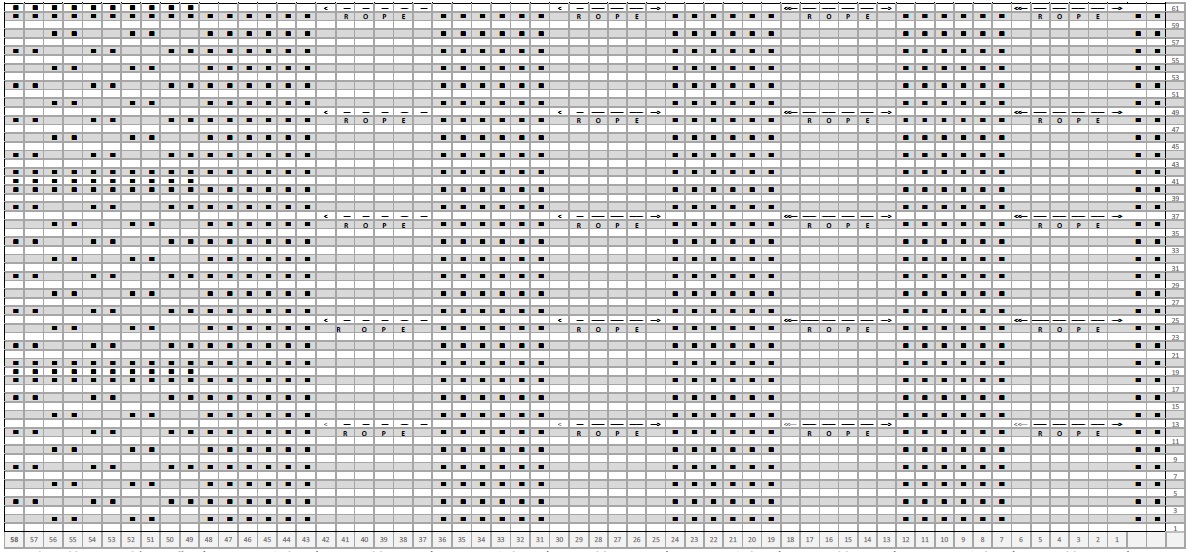 |
Seed stitch
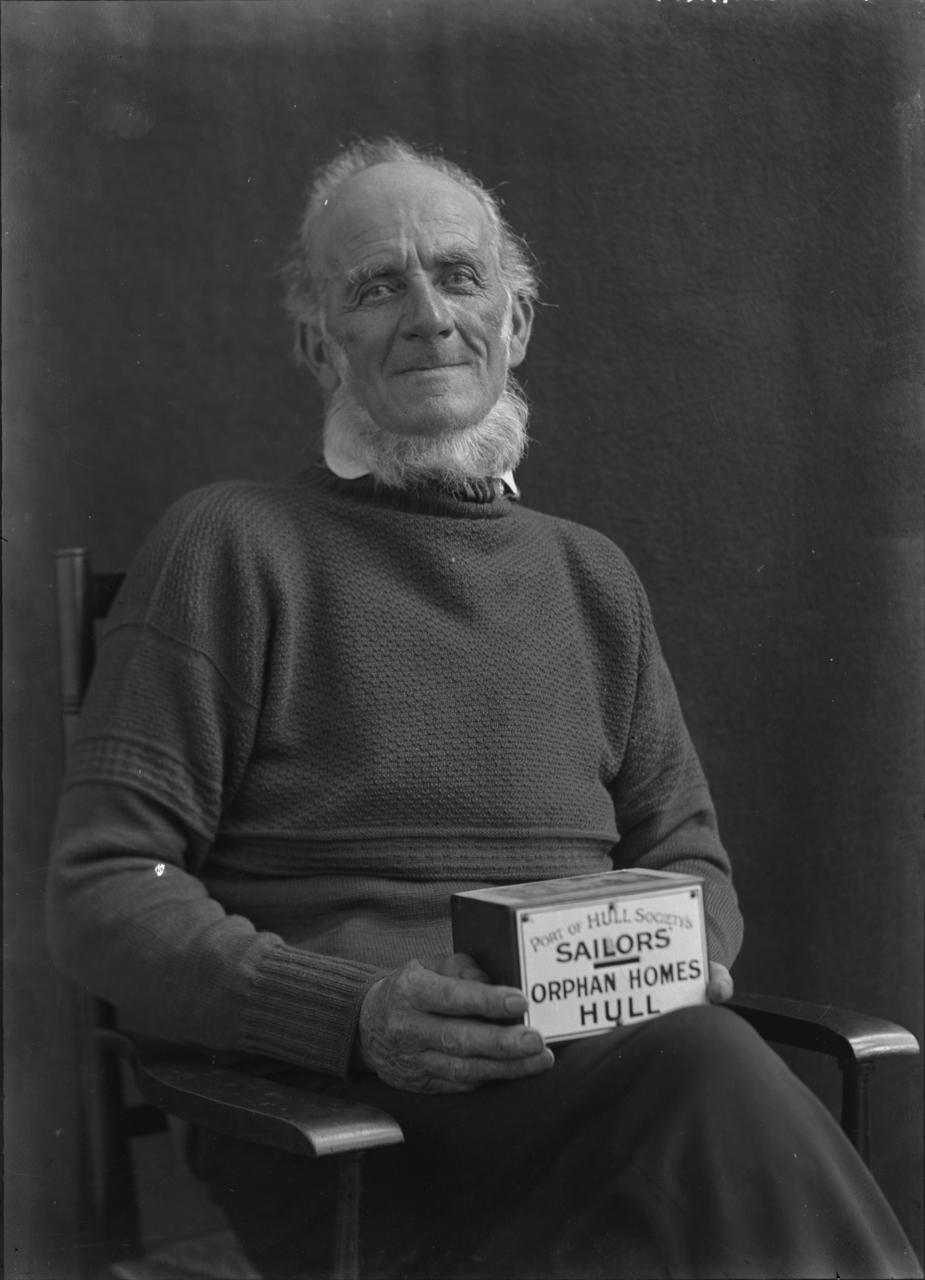 A plain yoke of seed stitch all over with a band at the bottom of the yoke of a different seed stitch. Cromer Museum has a beautiful example from the Balls family. Also worn by "Wessun" Allen at Cromer. The Balls and Allen families were 'West Beach fishermen'.
A plain yoke of seed stitch all over with a band at the bottom of the yoke of a different seed stitch. Cromer Museum has a beautiful example from the Balls family. Also worn by "Wessun" Allen at Cromer. The Balls and Allen families were 'West Beach fishermen'.
| GP10 | Bob Craske's plain seed stitch gansey | Sheringham undated |
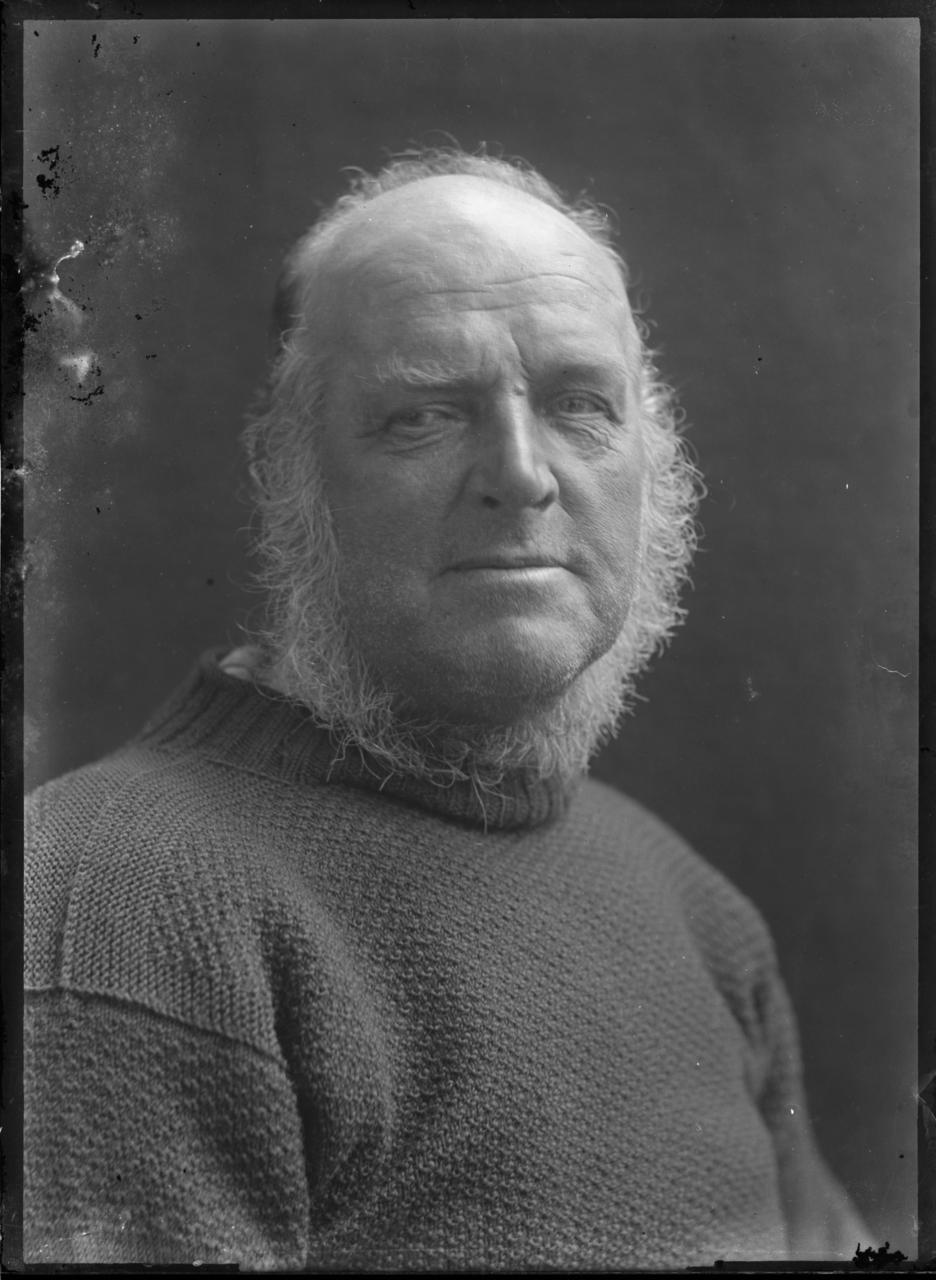 Norfolk Museums Service (Cromer Museum) |
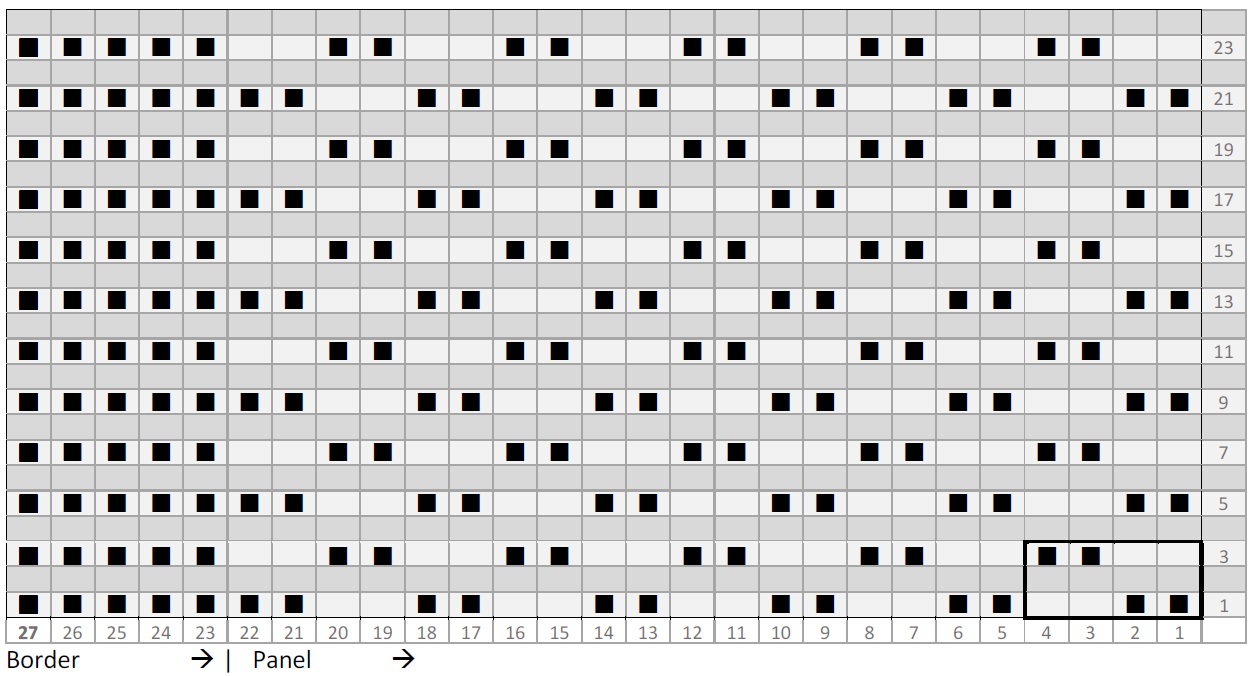 |
| GP15 | John Craske's plain seed stitch gansey | Sheringham undated |
 Norfolk Museums Service (Cromer Museum) |
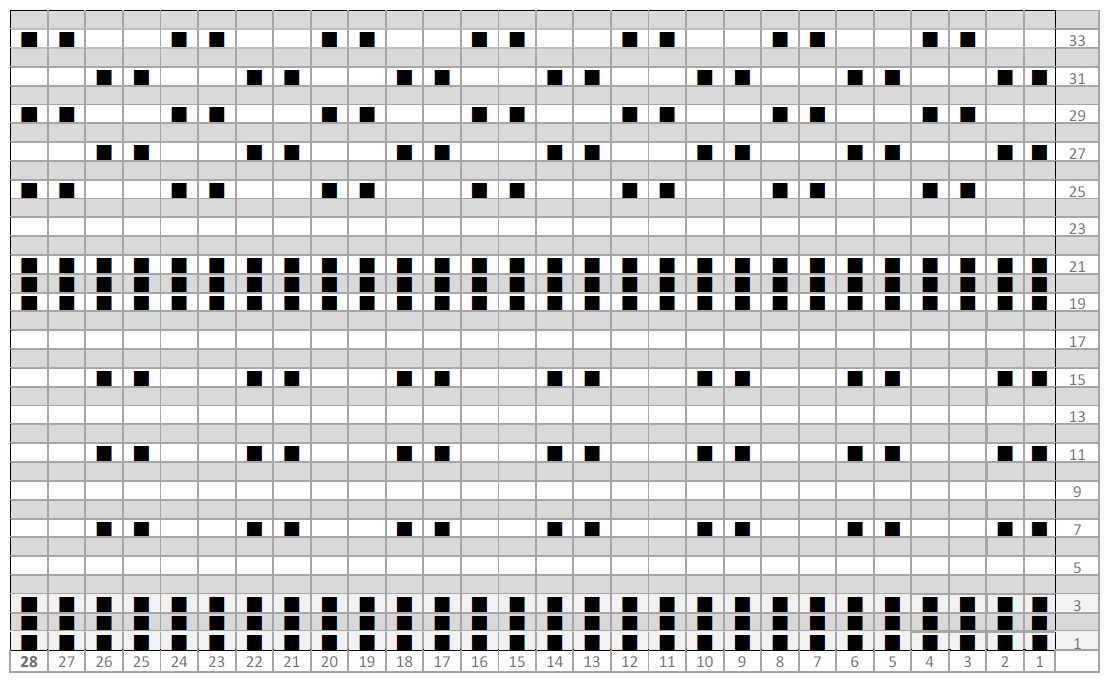 |
| GP64 | Cromer seed stitch gansey | Cromer undated |
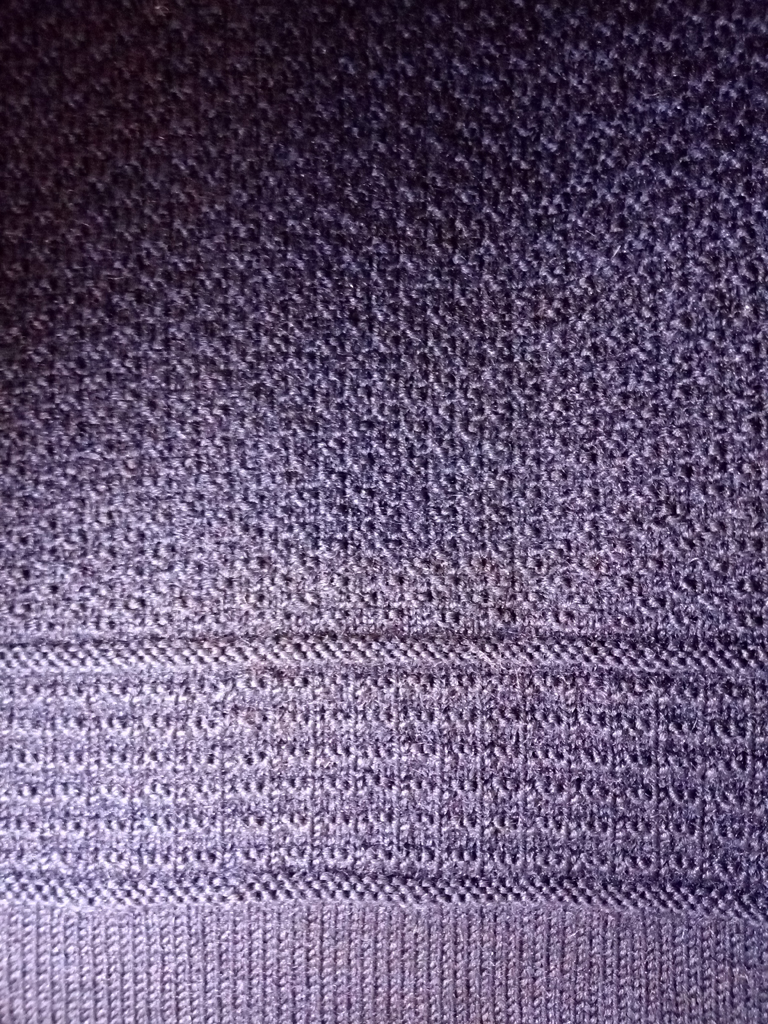 |
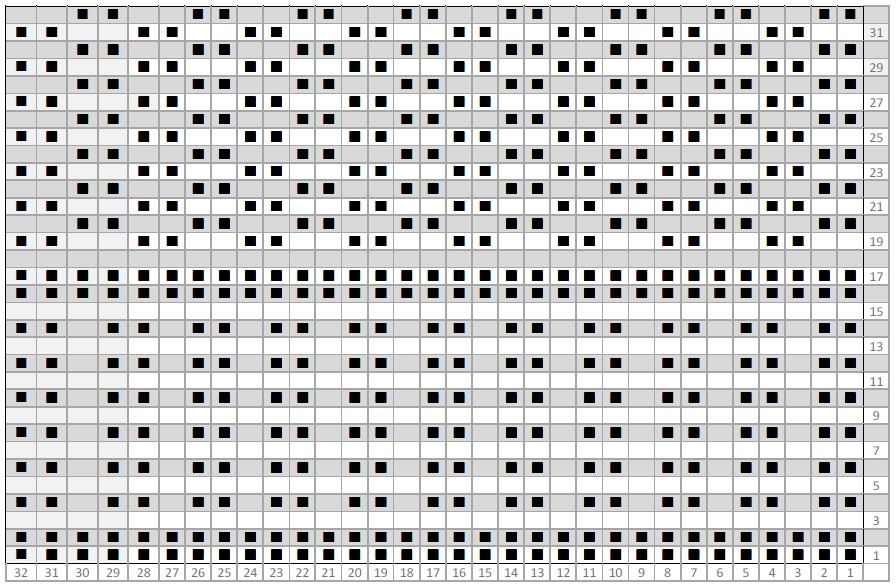 |
Waves or Marriage Lines machine-knitted ganseys
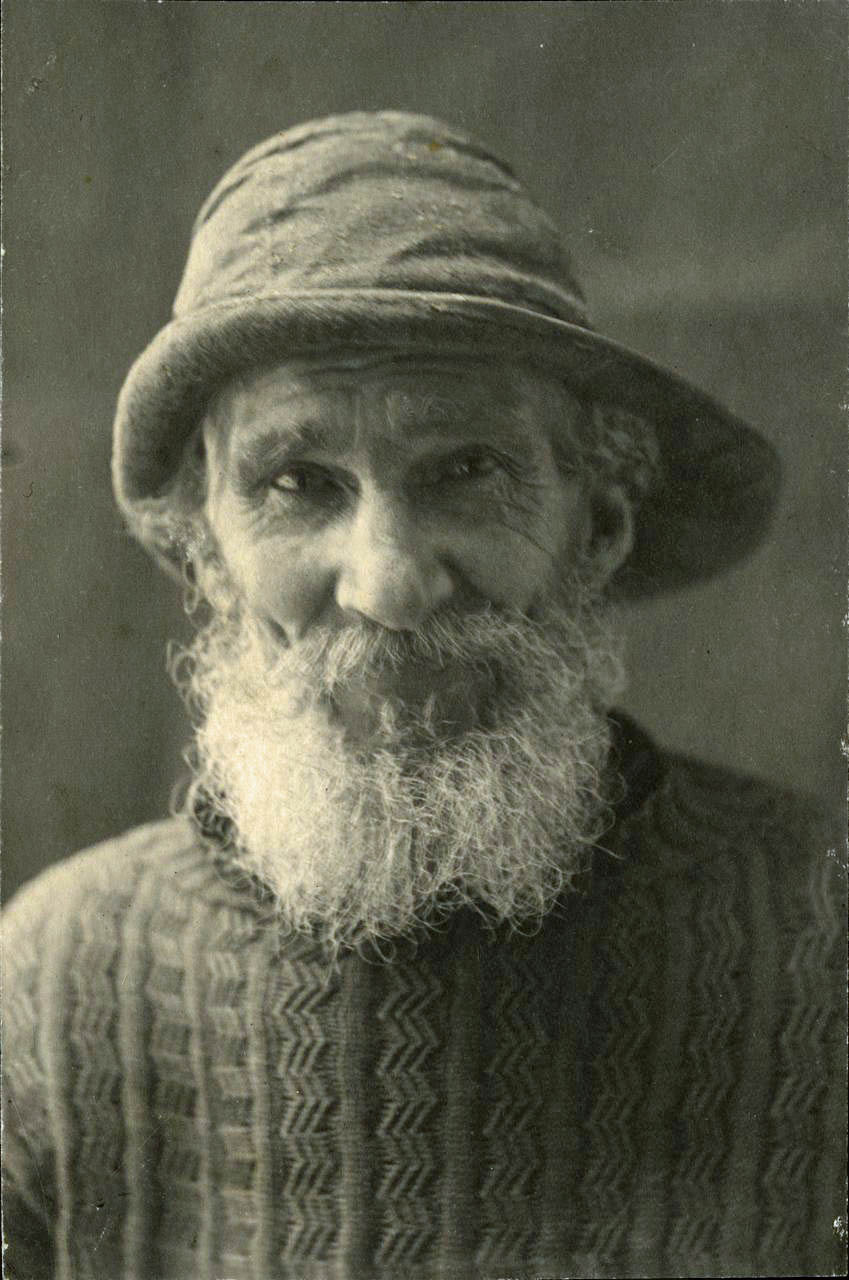 Waves or Marriage Lines machine-knitted ganseys begin to appear in photographs of fishermen from about 1900 onwards. They were popular with some fishermen in Cromer where there was not such a strong tradition of gansey knitting but were found elsewhere in Norfolk and around Britain, Ireland and even the Netherlands. In Sheringham, that pinnacle of the gansey knitting artform, some fishermen evidently had no one to knit for them or they preferred to buy a ready-made one from the Cosalt Depot on Beeston Road along with other supplies. The marriage lines pattern was available for over 8 decades and I am wearing one myself as I write this. I can attest to its qualities of warmth and durability as I wear it almost every day now. Mine is 42 years old, purchased in 1980 from the marine chandlers in Blakeney, Stratton Long Marine (now closed), who commissioned three gansey styles from the Stevenage Knitting Company (still in business, although no longer in Sish Lane, just 50 metres from my first girlfriend's house). They offered the so-called 'Cromer' pattern (i.e. this marriage lines pattern) in a light weight and a heavy weight version and a plain yoked kind of 'moss' (for want of a better word) which they called the 'Sheringham' pattern and that was a lighter weight too. Neither of the names carries any significance as to the origin or association with those places.
Waves or Marriage Lines machine-knitted ganseys begin to appear in photographs of fishermen from about 1900 onwards. They were popular with some fishermen in Cromer where there was not such a strong tradition of gansey knitting but were found elsewhere in Norfolk and around Britain, Ireland and even the Netherlands. In Sheringham, that pinnacle of the gansey knitting artform, some fishermen evidently had no one to knit for them or they preferred to buy a ready-made one from the Cosalt Depot on Beeston Road along with other supplies. The marriage lines pattern was available for over 8 decades and I am wearing one myself as I write this. I can attest to its qualities of warmth and durability as I wear it almost every day now. Mine is 42 years old, purchased in 1980 from the marine chandlers in Blakeney, Stratton Long Marine (now closed), who commissioned three gansey styles from the Stevenage Knitting Company (still in business, although no longer in Sish Lane, just 50 metres from my first girlfriend's house). They offered the so-called 'Cromer' pattern (i.e. this marriage lines pattern) in a light weight and a heavy weight version and a plain yoked kind of 'moss' (for want of a better word) which they called the 'Sheringham' pattern and that was a lighter weight too. Neither of the names carries any significance as to the origin or association with those places.
The three-dimensional quality of the wool fabric is created on a racking bed machine knitting, a technique that I believe is not easily reproduced by hand-knitting. If anybody knows better, please get in touch.
| GP34 | Buck Craske's machine-knitted gansey | Sheringham early 20th century |
 Norfolk Museums Service (Cromer Museum) |
No chart |
| GP21 | Robert Pegg's machine-knitted waves or marriage lines gansey | Sheringham Post 1900 |
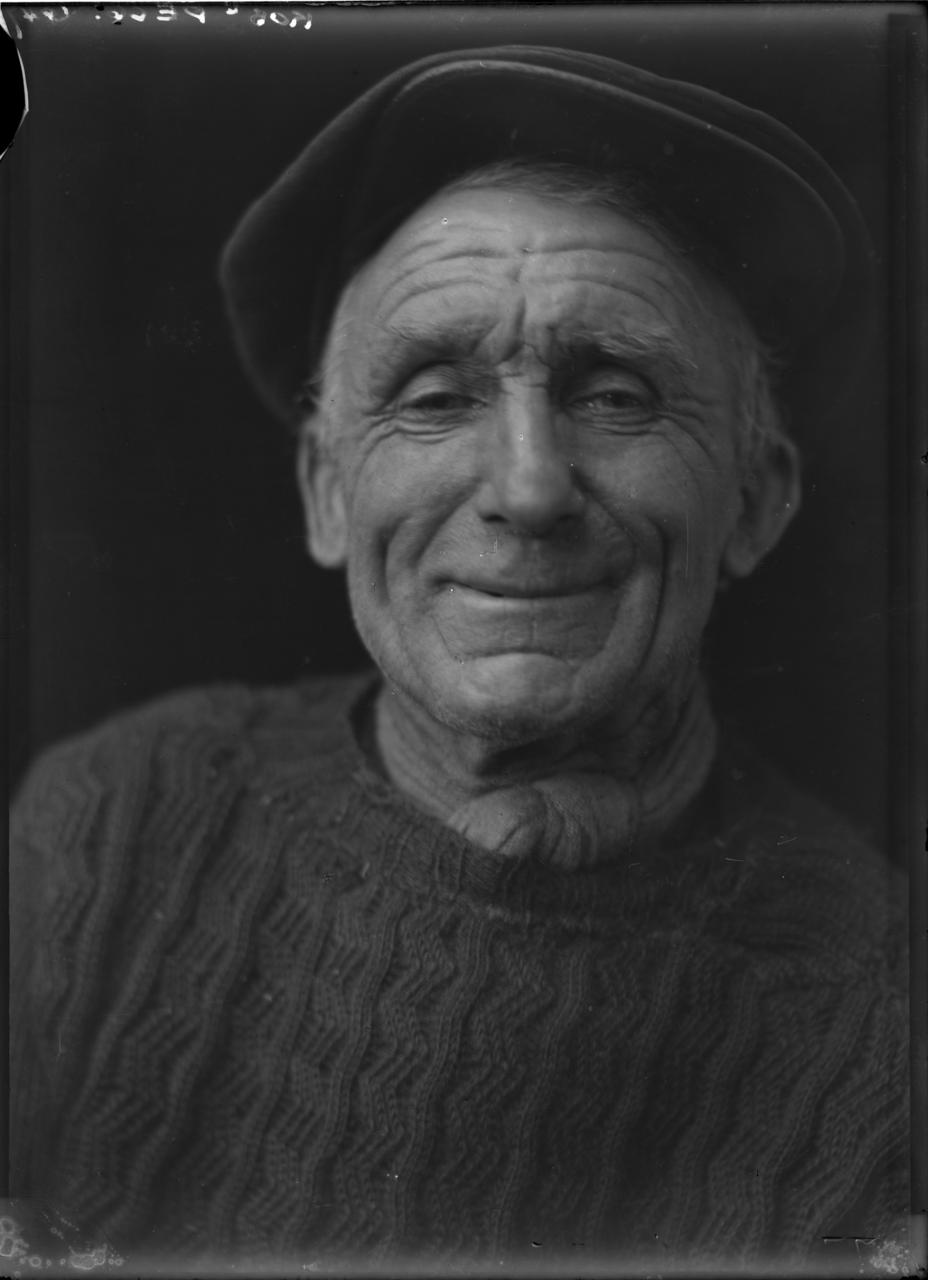 Norfolk Museums Service (Cromer Museum) |
No chart |
| GP6 | George Blogg's (or Billy West's?) machine knitted waves or marriage lines gansey |
Cromer (or Sheringham?) 1909 |
 Norfolk Museums Service (Cromer Museum) |
No chart |
| GP32 | Billy Harrison's machine-knitted waves or marriage lines gansey |
Cromer Post 1900 |
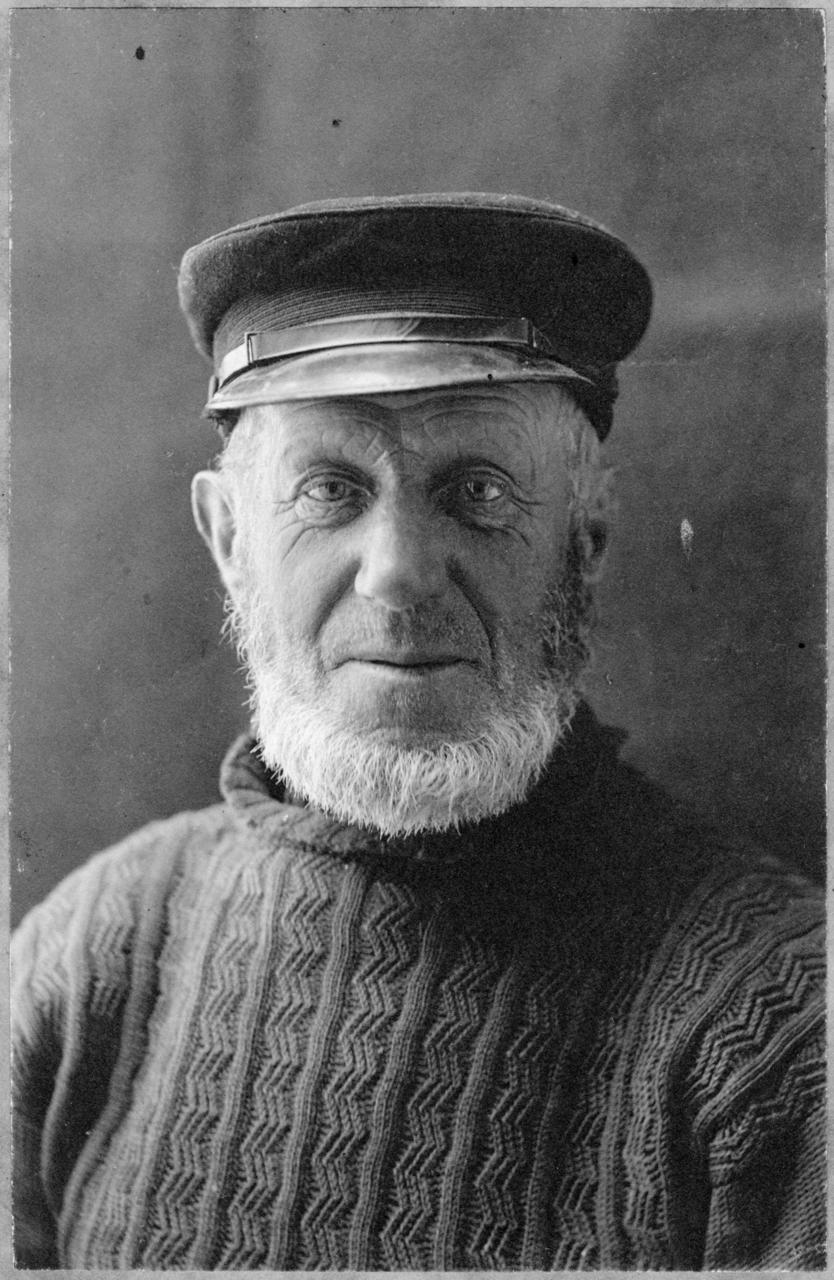 Norfolk Museums Service (Cromer Museum) |
No chart |
| GP53 | George "Salter" Farrow's machine-knitted knitted waves or marriage lines gansey |
Sheringham Post 1900 |
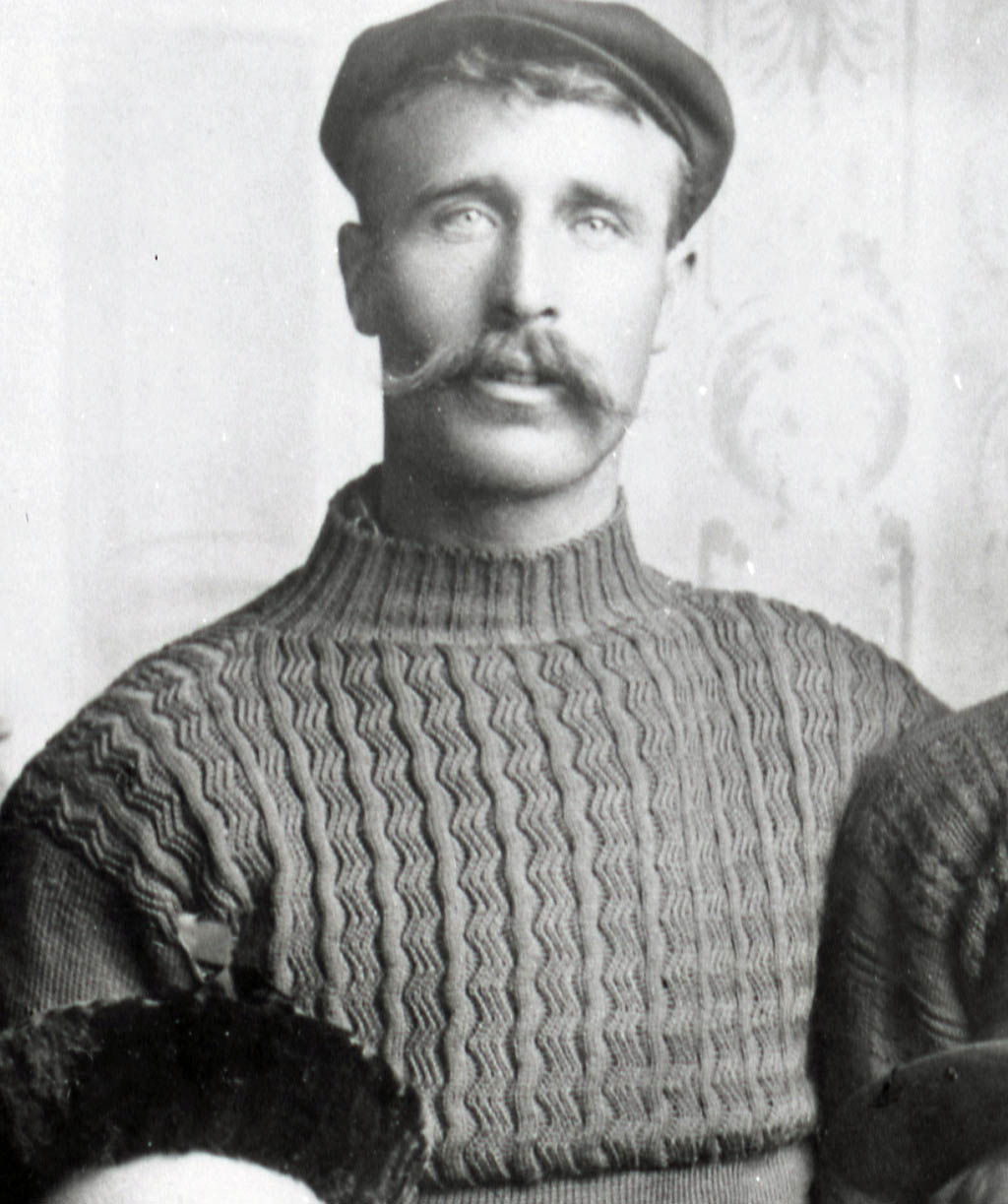 |
No chart |
| GP28 | Kite Rix's machine-knitted knitted waves or marriage lines gansey |
Cromer Post 1900 |
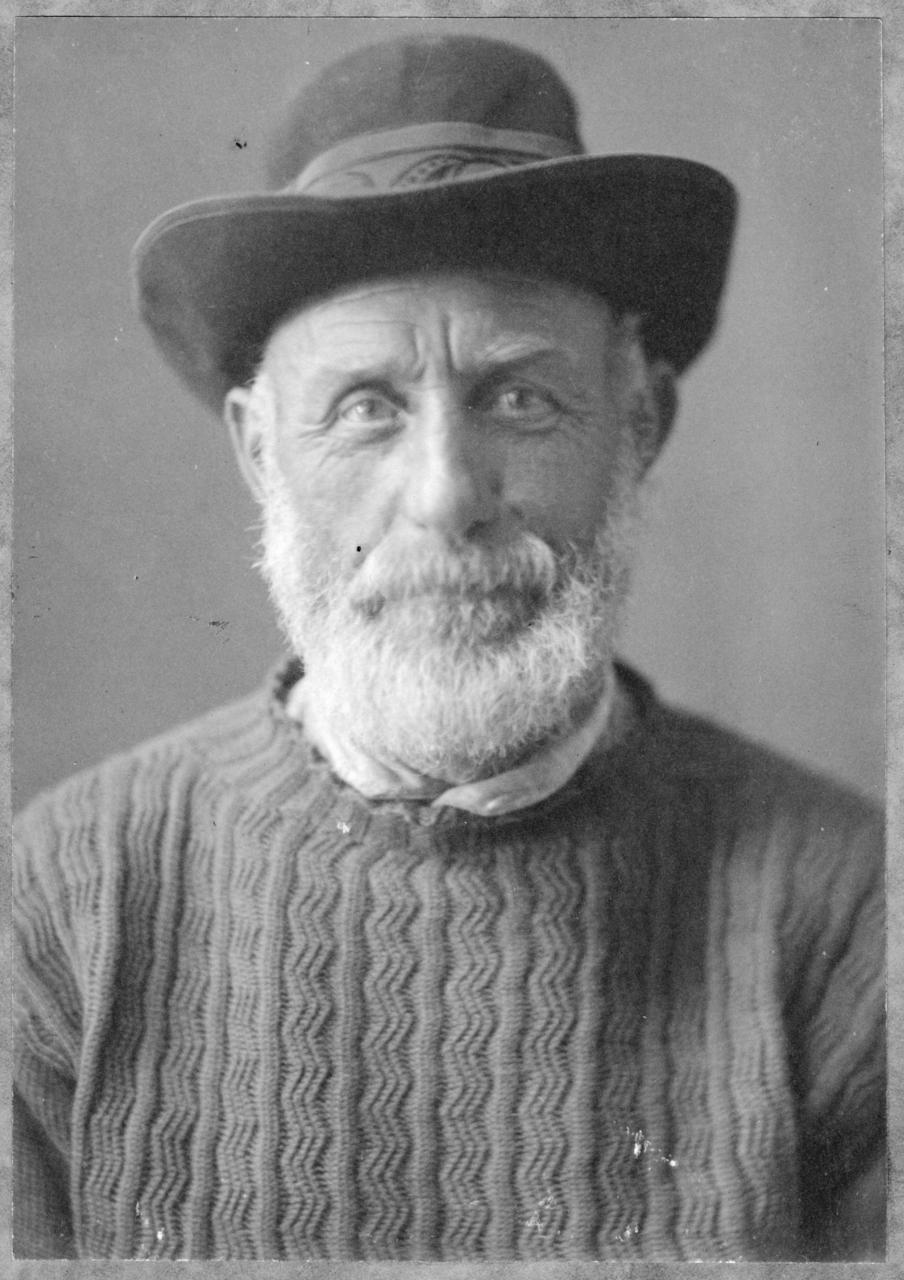 Norfolk Museums Service (Cromer Museum) |
No chart |
Miscellaneous
| GP22 | John Harrison's plain machine-knitted gansey | Cromer undated |
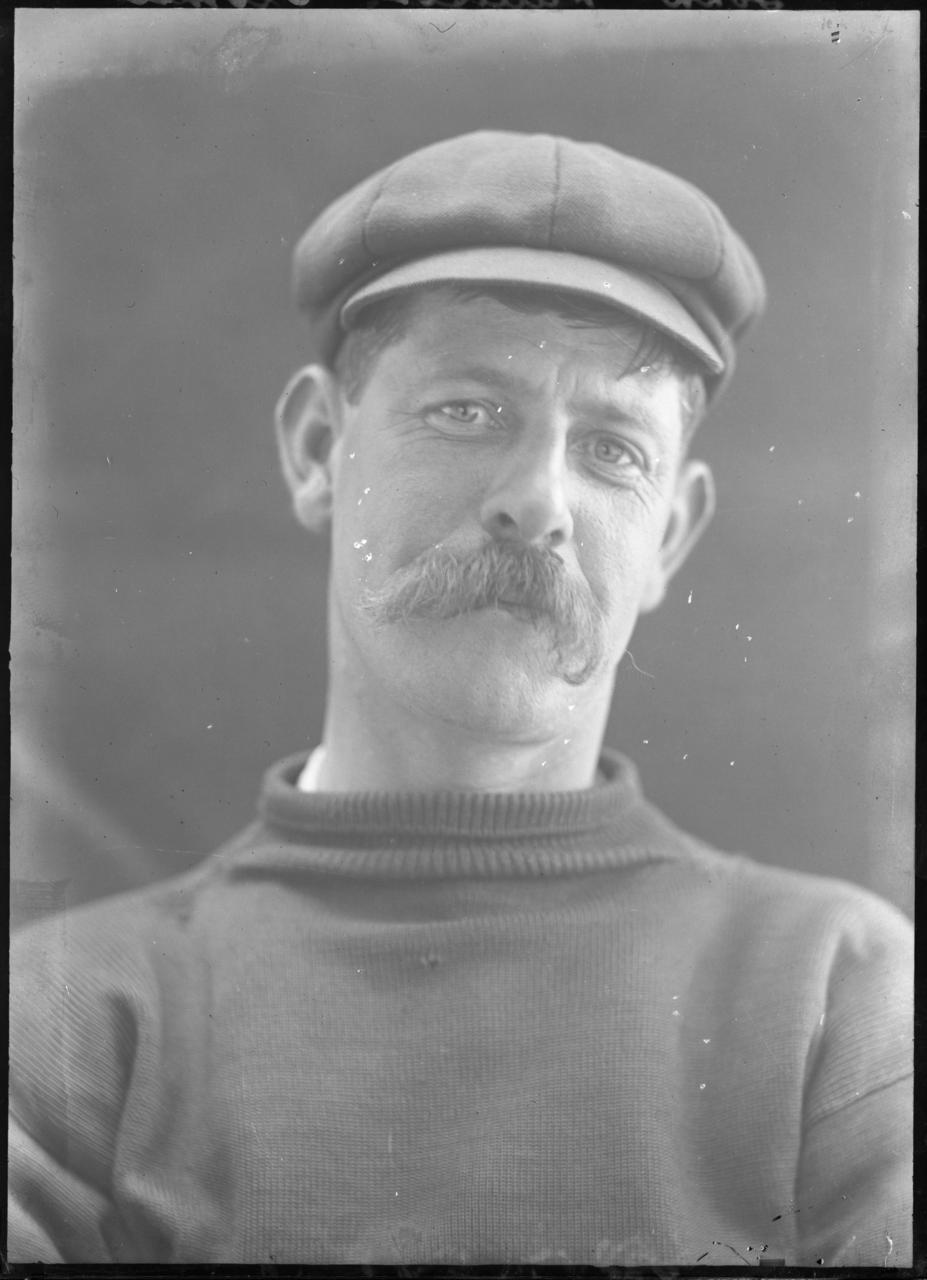 Norfolk Museums Service (Cromer Museum) |
No chart |
| GP30 | Robert Warner's button-up woollen jerkin | Cromer undated |
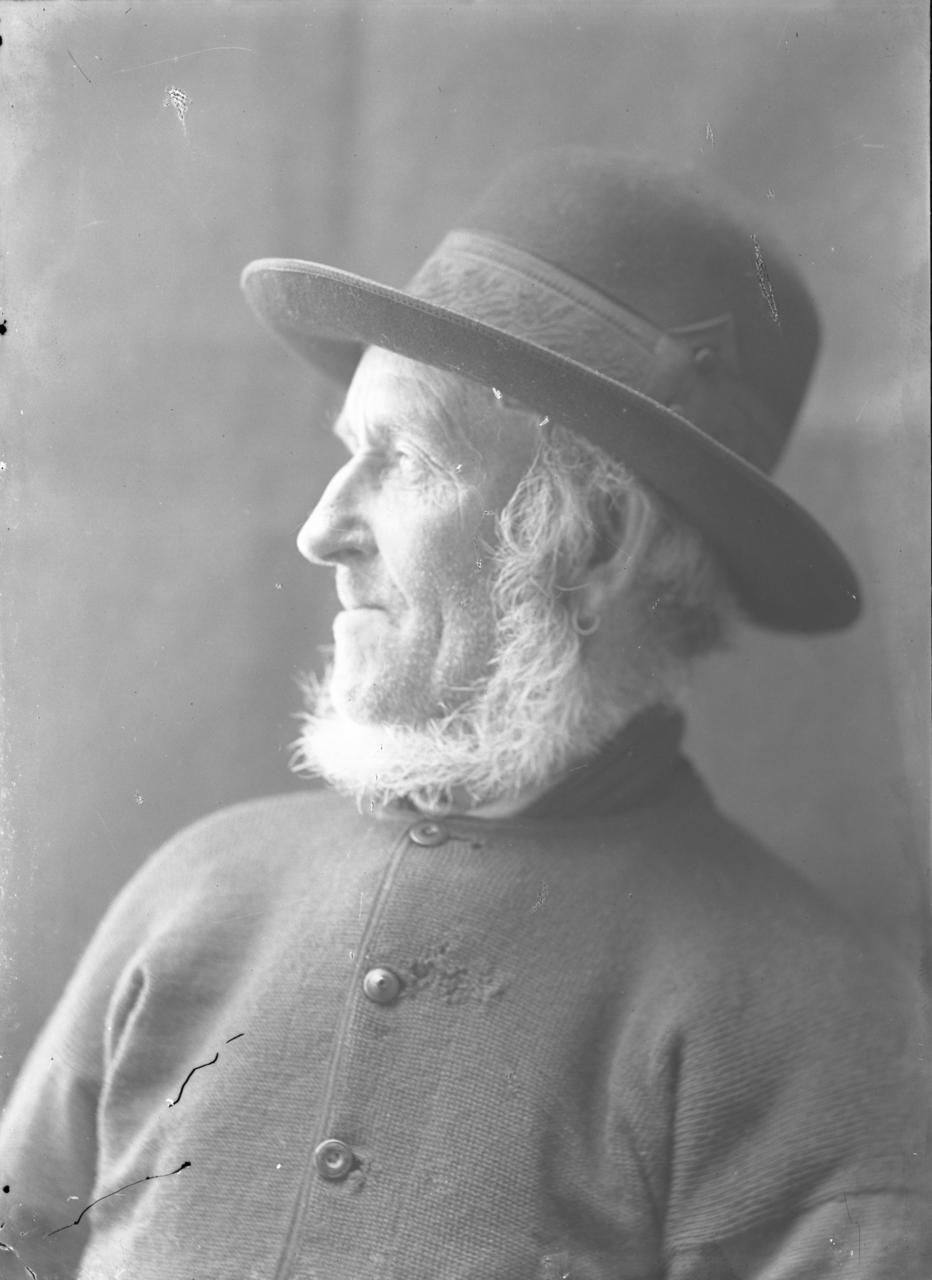 Norfolk Museums Service (Cromer Museum) |
No chart |
References
Correll, Philip M. Lewis Harding, Cornwall's Pioneer Photographer. 2000, Polperro Heritage Press
Childs, Alan and Sampson, Ashley. Time and Tide, The story of Sheringham's fishermen and their families. 2004, Sheringham Museum
Stibbons, Peter, Lee, Katherine and Warren, Martin Crabs and Shannocks, The Longshore fishermen of North Norfolk. 1984, Poppyland Publishing
Thompson, Gladys Patterns for Guernseys, Jerseys and Arans. Third edition 1979, Dover Publications Inc., New York
Martin Warren, The Northfolk Project
20.11.2022